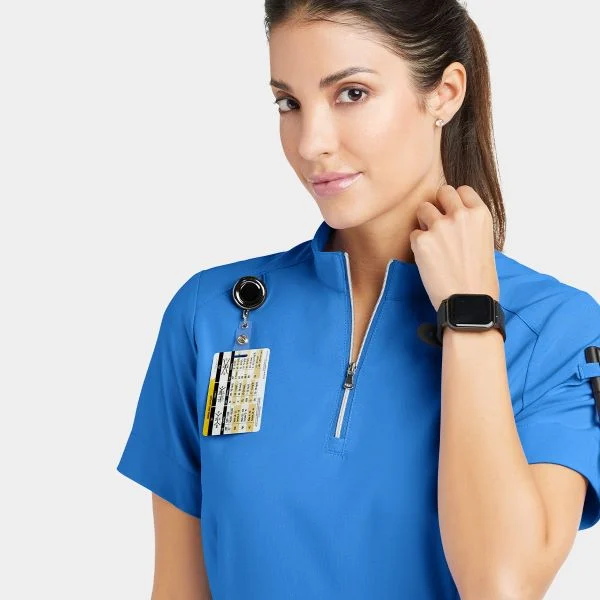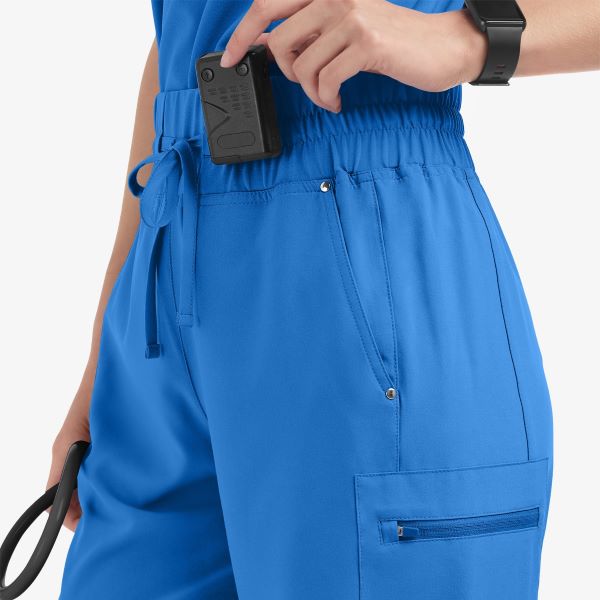Revolutionizing Healthcare: The Role of Technology in Modern Nursing Scrubs
April 2, 2024
By: Angela White
In the rapidly evolving landscape of healthcare, technology continues to play an increasingly integral role. From electronic medical records to telemedicine, innovations are transforming every aspect of patient care. One area where technology is making significant strides is in the design and integration of wearable devices into nursing scrubs. These advancements not only enhance the efficiency and effectiveness of healthcare delivery but also contribute to the well-being of both patients and healthcare professionals.
The Evolution of Nursing Scrubs:
Traditionally, nursing scrubs have been primarily designed for functionality and hygiene, with little emphasis on incorporating technological capabilities. However, as healthcare becomes more digitized and patient-centric, there is a growing need for nursing uniforms to adapt to these changes. Modern nursing uniforms are no longer just garments; they are becoming sophisticated tools equipped with wearable devices that monitor vital signs, track patient data, and streamline communication among healthcare teams.

Integrating Wearable Devices:
One of the most notable advancements in modern scrubs is the integration of wearable devices. These devices, such as smartwatches, fitness trackers, and even specialized medical sensors, can be seamlessly embedded into the fabric of scrubs, providing nurses with real-time data and insights at their fingertips. For example, a smartwatch worn as part of nursing attire can monitor heart rate, activity levels, and even stress levels, allowing nurses to manage their well-being while on duty.
Enhancing Patient Care:
The integration of wearable devices into medical scrubs not only benefits healthcare professionals but also enhances the quality of patient care. With access to real-time patient data, nurses can quickly identify changes in vital signs, track medication administration, and monitor patient activity levels. This proactive approach enables early intervention and personalized care, ultimately improving patient outcomes and satisfaction.
Streamlining Communication:
Effective communication is essential in healthcare settings to ensure coordinated care and patient safety. Wearable devices integrated into nursing scrubs facilitate seamless communication among healthcare teams, enabling nurses to receive alerts, messages, and updates directly on their devices. Whether it's a critical lab result or a request for assistance, nurses can respond promptly, enhancing efficiency and reducing response times.

Promoting Workforce Wellness:
In addition to improving patient care and communication, technology-infused nursing scrubs also prioritize the well-being of healthcare professionals. With features like posture correction sensors and activity trackers, nurses can monitor their physical health and take proactive steps to prevent burnout and injury. Moreover, built-in stress management tools provide nurses with resources to cope with the demands of their job, fostering a supportive work environment.
Challenges and Considerations:
While the integration of technology into nursing scrubs offers numerous benefits, it also presents challenges and considerations. Privacy and security concerns regarding patient data must be addressed to ensure compliance with healthcare regulations. Additionally, the cost of implementing and maintaining these technological solutions may be prohibitive for some healthcare facilities. Therefore, it is crucial to weigh the potential advantages against the practical considerations before widespread adoption.
The integration of wearable devices into modern nursing scrubs represents a significant step forward in leveraging technology to enhance healthcare delivery. By providing nurses with real-time data, improving communication, and promoting workforce wellness, these innovations are revolutionizing patient care. As technology continues to evolve, nursing attire will undoubtedly evolve alongside it, shaping the future of healthcare for generations to come.
